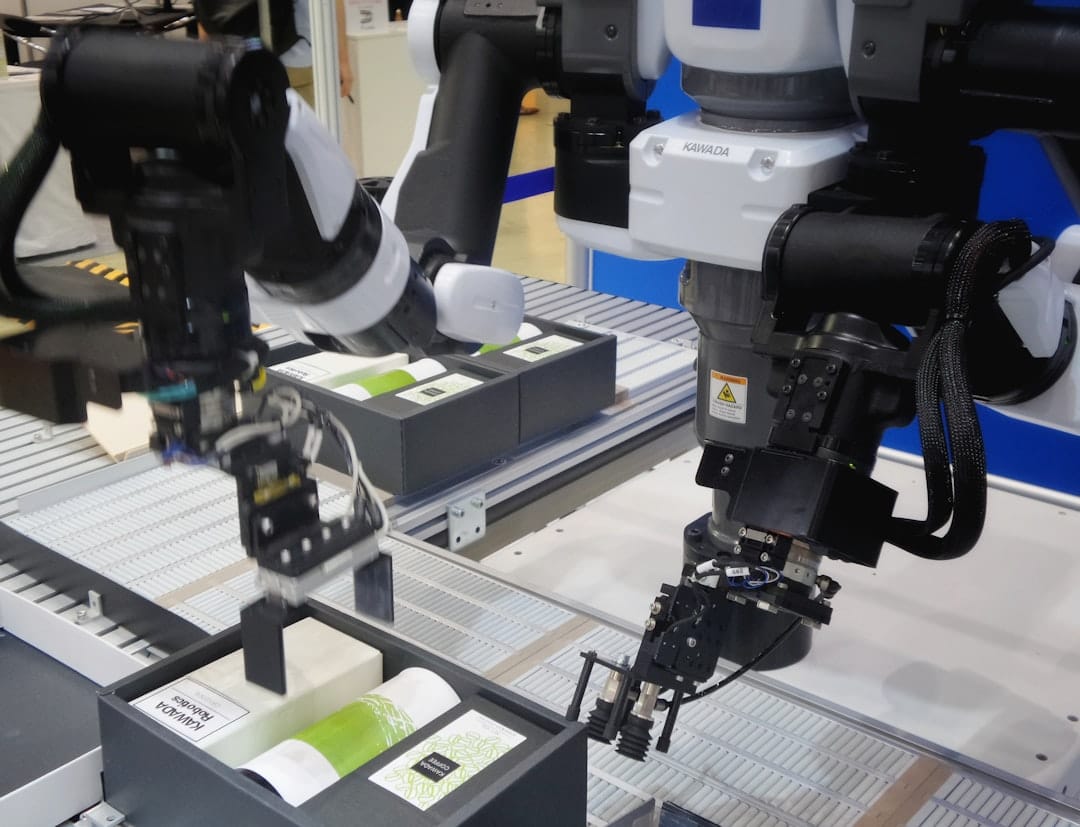Agentic AI vs Traditional Automation (RPA): How Are They Different?
Automation has been transforming businesses for decades, but the rise of agentic AI marks a paradigm shift in whats possible. While traditional automation solutions like Robotic Process Automation...

Automation has been transforming businesses for decades, but the rise of agentic AI marks a paradigm shift in what's possible. While traditional automation solutions like Robotic Process Automation (RPA) have delivered significant efficiency gains, they operate fundamentally differently from AI agents. This distinction isn't merely academic - it has profound implications for which business problems each technology can solve and the value they can deliver.
Understanding Traditional Automation (RPA)
Robotic Process Automation represents the evolution of traditional automation approaches. At its core, RPA is designed to mimic human actions within digital systems—clicking buttons, entering data, copying and pasting information, and moving files between locations. This technology excels at executing repetitive, rule-based tasks with precision and reliability.
How RPA Works
RPA operates through software "robots" or "bots" that follow explicit, predefined instructions. These bots interact with applications through the user interface, just as a human would, but with greater speed and consistency. The fundamental characteristics of RPA include:
1. Rule-based execution: RPA requires explicit, step-by-step instructions for every scenario it encounters. 2. Structured data handling: Traditional automation works best with structured data in predictable formats. 3. Deterministic outcomes: Given the same inputs, RPA will always produce identical outputs. 4. Limited decision-making: RPA can make simple decisions based on predefined if-then-else logic. 5. Minimal learning capability: Once programmed, RPA bots don't adapt or improve without human intervention.
Common RPA Applications
RPA has proven valuable across numerous business functions:
- Finance: Automating invoice processing, reconciliations, and report generation - Human Resources: Streamlining onboarding workflows and payroll processing - Customer Service: Handling routine ticket creation and status updates - Supply Chain: Managing inventory updates and purchase order creation - IT Operations: Executing system maintenance and user provisioning
The value proposition of RPA centers on efficiency, accuracy, and cost reduction for high-volume, repetitive tasks. According to Deloitte, RPA implementations typically deliver 25-50% cost savings while reducing processing time by 30-80% for suitable processes.
The Rise of Agentic AI
Agentic AI represents a fundamental evolution beyond traditional automation. Rather than simply executing predefined steps, AI agents can perceive their environment, make decisions, learn from experiences, and accomplish goals with varying degrees of autonomy.
What Makes AI Agents Different
The core differences between agentic AI and RPA stem from several key capabilities:
1. Autonomous decision-making: AI agents can make complex decisions based on multiple factors and uncertain information. 2. Unstructured data processing: Agents can work with text, images, speech, and other unstructured information. 3. Context awareness: Agents understand the broader context of their tasks and can adapt accordingly. 4. Learning and improvement: Through various machine learning techniques, agents can improve their performance over time. 5. Goal-oriented behavior: Rather than following fixed steps, agents pursue objectives, finding different paths to achieve them.
The Technical Foundation
Agentic AI builds upon several technological advances:
- Large Language Models (LLMs): Provide the reasoning and language understanding capabilities - Computer Vision: Enables visual perception and understanding - Reinforcement Learning: Allows agents to learn optimal behaviors through trial and error - Planning Algorithms: Help agents determine sequences of actions to achieve goals - Multi-agent Architectures: Enable collaboration between specialized AI systems
Key Differences Between Agentic AI and RPA
When evaluating these technologies for business applications, several critical distinctions emerge:
1. Handling Ambiguity and Exceptions
RPA: Traditional automation struggles with exceptions and edge cases. When unexpected situations arise, RPA typically halts execution and requires human intervention. This limitation means RPA implementations often require extensive exception-handling logic and human oversight. Agentic AI: AI agents can navigate ambiguity and handle exceptions more gracefully. They can reason through novel situations, apply relevant knowledge, and make reasonable decisions even when facing scenarios not explicitly covered in their training.
2. Data Requirements and Flexibility
RPA: Requires structured, consistent data and well-defined processes. Variations in data formats or process steps can break RPA workflows, necessitating updates to the automation logic. Agentic AI: Can work with unstructured and semi-structured data, extracting meaning from natural language, images, and varied formats. This flexibility allows agents to operate in environments where information isn't perfectly organized.
3. Implementation Approach
RPA: Follows a procedural programming paradigm where developers must specify every step and condition. Implementation typically involves process mapping, rule definition, and explicit programming of each scenario. Agentic AI: Uses a goal-oriented approach where developers define objectives and constraints, then the agent determines how to accomplish those goals. Implementation focuses on training, fine-tuning, and establishing appropriate guardrails.
4. Adaptability to Change
RPA: Changes in underlying systems, interfaces, or business rules often require significant updates to automation scripts. This maintenance burden can reduce the long-term ROI of RPA initiatives. Agentic AI: More resilient to surface-level changes, as agents can adapt to modified interfaces or altered formats. However, they may require retraining or fine-tuning when fundamental assumptions change.
5. Cognitive Complexity
RPA: Excels at high-volume, repetitive tasks with clear rules but lacks the cognitive capabilities for complex reasoning or judgment. Agentic AI: Can handle tasks requiring reasoning, creativity, and judgment—opening new automation frontiers beyond what RPA can address.
Comparative Use Cases
To illustrate these differences, consider how each technology might approach common business scenarios:
Customer Support Automation
RPA Approach: Automate ticket routing based on predefined categories, populate knowledge base articles based on keywords, and update customer records with interaction details. Agentic AI Approach: Understand customer inquiries in natural language, determine intent, provide contextually relevant answers, handle multi-turn conversations, and escalate appropriately when unable to resolve issues.
Financial Document Processing
RPA Approach: Extract data from standardized invoices with consistent formats, validate against predefined rules, and enter information into accounting systems. Agentic AI Approach: Process invoices with varying formats, extract relevant information even when layouts change, understand contextual details, and make judgment calls about categorization or approval routing.
Compliance Monitoring
RPA Approach: Check specific data points against regulatory requirements, flag predefined patterns of concern, and generate standardized reports. Agentic AI Approach: Review communications and transactions for regulatory issues, understand nuanced compliance requirements, identify potential risks even in novel situations, and explain reasoning behind compliance determinations.
When to Use Each Technology
Understanding these fundamental differences helps organizations determine which technology best fits specific use cases:
RPA Excels When:
- Processes are stable, well-defined, and rule-based - Data is structured and consistent - High transaction volumes justify automation investment - Quick implementation and ROI are priorities - Compliance requires deterministic, auditable processes
Agentic AI Shines When:
- Tasks involve unstructured data or natural language - Processes require judgment, reasoning, or creativity - Work involves adapting to new situations - Customer or employee experiences benefit from more natural interactions - Complex decision-making is needed with incomplete information
The Complementary Future
While the differences between RPA and agentic AI are significant, the future likely involves complementary deployment rather than an either/or proposition. Forward-thinking organizations are exploring hybrid approaches:
Hybrid Automation Architectures
- AI-enhanced RPA: Using AI to handle exceptions within RPA workflows - RPA-assisted agents: Employing RPA for structured subtasks within agent-driven processes - Orchestrated workflows: Coordinating between RPA bots and AI agents based on task requirements
Implementation Considerations
When developing a comprehensive automation strategy that leverages both technologies:
1. Process assessment: Evaluate each process component to determine whether RPA or agentic AI is more appropriate 2. Data readiness: Consider data structure, quality, and availability for both technologies 3. Governance frameworks: Establish appropriate oversight for both deterministic and probabilistic automation 4. Skills development: Build capabilities across both traditional automation and AI disciplines 5. Change management: Prepare the organization for different types of human-automation collaboration
Pricing and Economic Considerations
The economic models for RPA and agentic AI differ significantly, affecting ROI calculations and budgeting approaches:
RPA Economics
- Predictable costs: Typically licensed per bot or process - Front-loaded development: Higher initial configuration costs - Maintenance requirements: Ongoing updates as systems change - Linear scaling: Costs generally scale linearly with automation scope
Agentic AI Economics
- Consumption-based models: Often priced by API calls or computational resources - Training investments: Potential costs for custom model development - Continuous improvement: Ongoing learning capabilities that increase value over time - Non-linear scaling: Potential for increasing returns as agents learn across domains
Organizational Impact and Change Management
The human side of implementing these technologies differs significantly:
RPA Change Management
- Often positioned as "taking the robot out of the human" - Focuses on freeing employees from repetitive tasks - Typically requires minimal changes to core job functions - Skills transition centers on process monitoring and exception handling
Agentic AI Change Management
- Represents more fundamental changes to knowledge work - Requires rethinking roles around human-AI collaboration - May involve significant job redesign for affected positions - Skills transition emphasizes AI prompt engineering, oversight, and strategic direction
Looking Ahead: Convergence and Evolution
The distinction between RPA and agentic AI will likely evolve as both technologies advance:
1. Increasing intelligence in RPA platforms: Traditional automation vendors are incorporating more AI capabilities 2. Improved reliability in AI agents: As agents become more reliable, they'll address current limitations 3. Specialized vertical solutions: Industry-specific offerings that combine both approaches 4. End-to-end process orchestration: Platforms that seamlessly manage both RPA and AI components
Conclusion
The difference between agentic AI and traditional automation technologies like RPA isn't merely technical—it represents a fundamental shift in how we approach business process automation. While RPA excels at executing predefined, rule-based tasks with precision, agentic AI opens new frontiers for automating work requiring judgment, reasoning, and adaptability.
Organizations should view these technologies as complementary tools in their automation toolkit rather than competing alternatives. The most successful automation strategies will leverage each technology's strengths while mitigating their limitations through thoughtful implementation and governance.
As you develop your automation strategy, consider not just the immediate efficiency gains but also the longer-term transformation potential. RPA may deliver quick wins for structured, stable processes, while agentic AI investments may yield more profound competitive advantages by enhancing decision quality, enabling new capabilities, and creating more adaptive organizations.
The future belongs to organizations that can effectively orchestrate both rule-based automation and intelligent agents across their operations, creating a digital workforce that combines the reliability of RPA with the adaptability and intelligence of agentic AI.



